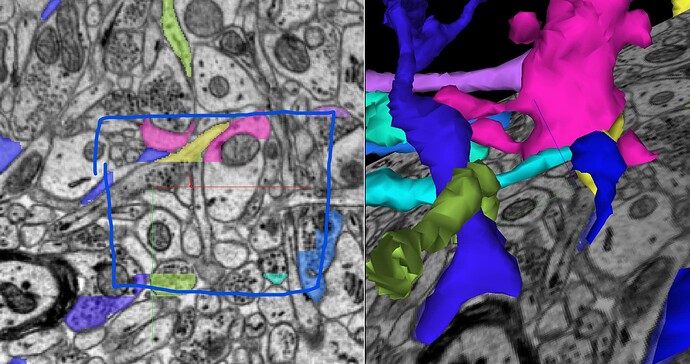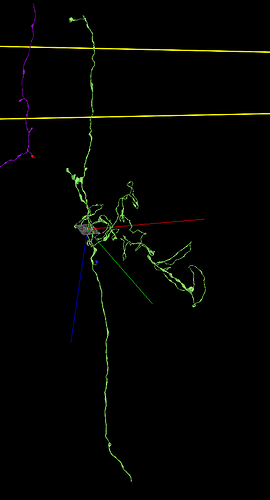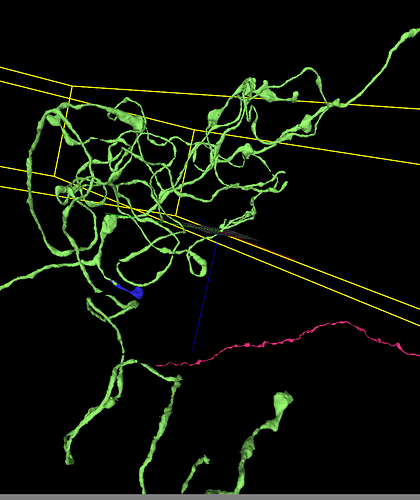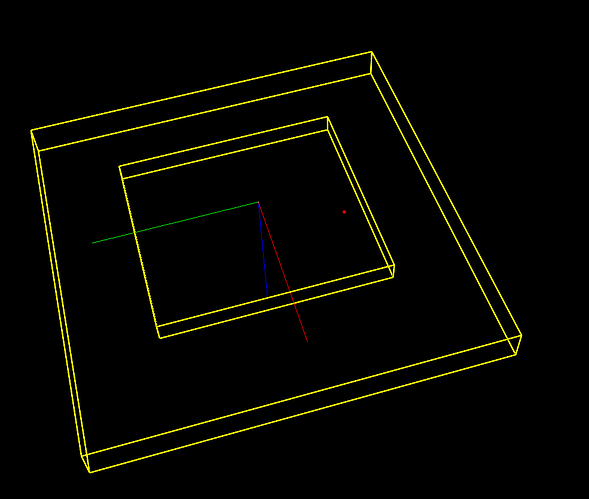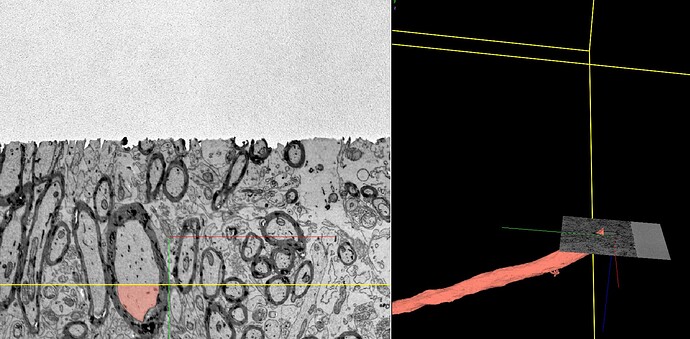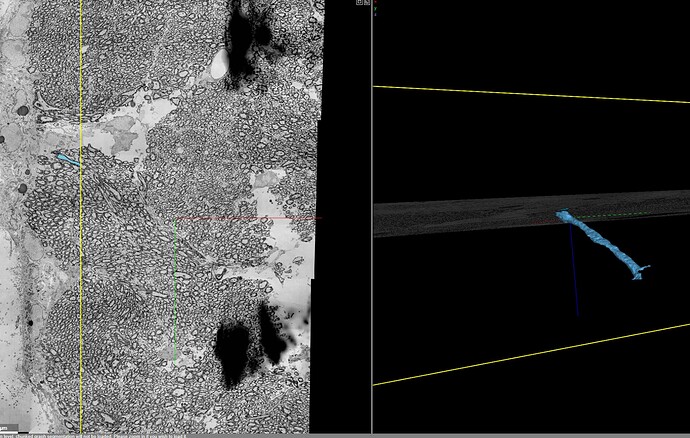don`t know, would think she could use any random cells
We’re in process of getting more ![]()
Also for the future these kinds of questions are well suited to the Pyr Proofreading Help thread. Let’s leave this one for science question!
Haven’t seen it in BANC (or FW) or at least far away from the dataset end, but how come/why are there such regions in pyr’s current dataset where stuff are untraceable? They appear to be ‘cubes’ of it as well shape wise.
I’d attach a vid but vid formats aren’t allowed.
I’ve seen this in several places around the dataset.
this one’s around 44000, 36276, 2107.
thanks.
Is there a defined end goal for this dataset or are we just identifying as many MF candidates as possible?
Oh I guess additionally how does the size (of the files composing this dataset or the physical size) compare to the other ones we’ve worked on
i have not seen places where it cut of like that, other than when there seems to be some kind of loading trouble on my end. But it looks like there are more of unselectable stuff than in banc/flywire from my experience so far.
Decided to put this one in questions versus amusements. This is the first time I’ve seen a neuron here take a directional reversal, and amusingly, draping over and around another neuron to do so:
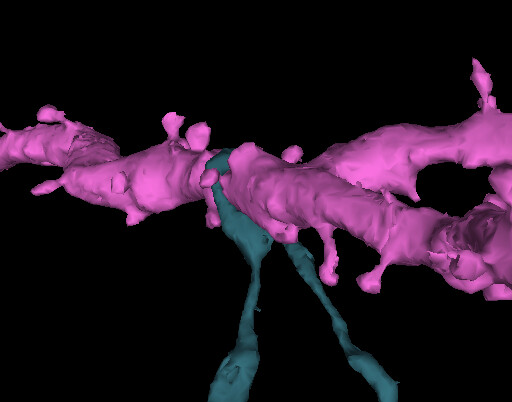
https://play.pyr.ai/#!middleauth+https://global.daf-apis.com/nglstate/api/v1/5755220396081152
Its direct siblings do not seem to take this kind of directional approach. Naturally, I’m curious!
I’ve seen something similar in Flywire. I believe, it has to do with the development phase, when the neurons are in quite different positions and move in all directions. Sometimes they twist like this and then the “stronger” one wins this rope pulling contest when they move to they target positions.
Is fly’s equivalent of hippocampus the mushroom body or something else, or there isn’t any analogue?
https://play.pyr.ai/#!middleauth+https://global.daf-apis.com/nglstate/api/v1/6328861865279488
what even is this cell? I’ve seen less twists, turns and loop de loops in Agatha Christie novels!
No, srly what type of neuron is this cell? It reminds me of the ‘bouquet’ cells in FW fly brain that would circle around break off into many sub branches and end up in the ‘bouquet of flowers’ kind of thing, but this is no fly brain.
This may have been answered in one of the town halls/zoom calls but how come is the dataset we’re currently working in like a smaller dataset inside a bigger dataset? Is the larger one going to be available later on or is it blocked off for some other reason?
Anyone can feel free to finish those two “demos” from Challenge 1 if you’d like!
I’m not sure on the reason for the two differently sized bounding boxes here, but we are currently working in the full dataset.
ah, interesting part is 3D ends in smaller bounding box, but 2D (scrolling) does go on the left/right/front/ back sides (at least for a bit further out) but ends on the up/down sides.
to the best of GMs/Lab knowledge will we have enough of the Hippocampus in the 1mm dataset to get an MF whole? (axon, CB and dendrites)?
B/c I think what we are tracing in this dataset are the axons only.
Could I ask what 1mm dataset you are referring to? Right now I think the CA3 dataset is the only one we have in this area of the brain.
if memory serves me right I remember watching the pyr release vid. and amy mentioning that there’s a new dataset to be released in the next few months that is going to be 1mm x1mm x1mm and will be the largest dataset to be traced to date. I just don’t remember if it’ll be in the hippocampus or the new mouse retina.
from what i remember it think she did say that that the orginal NEO dataset was 1mm x 1mm but that they had not managed to prepare it.
We don’t currently have another hippocampal dataset in the works at the moment as far as I’m aware.
I’m curious: Us tracing all the MFs and/or other cell types that go through the Dataset, are we only mapping pre/post synaptic connections to Pyramid cells or is it also part of the research to identify different cell sub-types and/or cell types previously unknown to science like we did in EW/FW and/or doing now in BANC?
Good question!
One of main goals is to observe the frequency and types of connections that are being made to the Pyramidal cells. This is why the tasks we are doing in CA3 are identifying/reconstructing Mossy Fibers and other branches that have pre/post synaptic connections to the Pyramidal cells.
For Mossy Fibers in particular, the scientists are researching and comparing the size of the MF boutons as well as the connections. Is there a group of MFs that have 2 boutons connect to the same pairs of Pyr cells? If so, why is that? Are certain Pyr cells having more MFs connecting to them? The scientists are running connectivity matrixes, etc. as part of their research.
PS. As far as I know all the cell types are known in CA3. I think some exceptions might be the inhibitory cell types…
